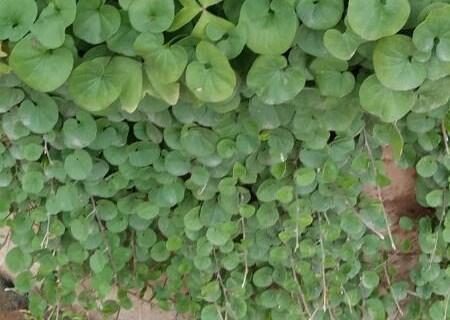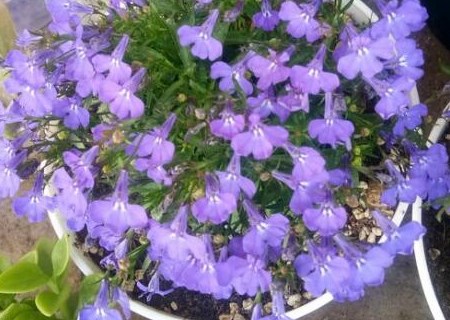How much is a jin of colorful cauliflower that is popular in Europe and America? How is the planting benefit?
The common cauliflower is yellow, crisp and delicious, but have you ever seen purple cauliflower, orange and green cauliflower? In fact, colored cauliflower has long been popular in Europe and the United States, as a variation of common cauliflower, in addition to having different colors, colored cauliflower is better than ordinary cauliflower in terms of nutritional value and taste. How much is the colored cauliflower per jin? How is the planting benefit?

Colorful cauliflower
Colorful cauliflower is a Brassica oleracea herb of Cruciferae. Including purple cauliflower, yellow cauliflower, light green cauliflower and so on, which are selected from cauliflower. The mature bulb of cauliflower is generally 20-30 cm in transverse diameter and 10-20 cm in diameter, which is composed of a fat and tender spindle and many fleshy pedicels. In addition to common cauliflower cultivation and commodity sales, colored cauliflower can also be cultivated in pot as a family vegetable garden or ornamental cultivation with good prospects.
This colorful cauliflower is a new type of cauliflower and non-genetically modified vegetables introduced from abroad and hybridized with ordinary cauliflower. This new type of cauliflower is more nutritious than ordinary cauliflower and is rich in vitamins, and carotene is 10 times that of ordinary cauliflower.
20 yuan per jin, subverting the tradition
Mr. Tang from Jiangxi planted a new type of colored cauliflower. By chance in 2015, Mr. Tang saw this kind of colored cauliflower after an agricultural exhibition. He thought it was very novel and characteristic, so he tried to grow it on a small scale. In the first year of planting, many local hotels ordered colored cauliflower from him, and it was in short supply.
Mr. Tang saw a business opportunity in colored cauliflower and began to plant it on a large scale in the second year. In addition to the hotels supplied in the first year, another part went to the market, with the first wholesale price of 20 yuan per jin, and the income this year was as high as several hundred thousand yuan. The income is three times that of ordinary cauliflower!
Planting benefit
Up to this year, Mr. Tang has been growing colored cauliflower for three years. After years of experience, Mr. Tang summed up a set of differences in yield harvested in different seasons:
1. The precocious harvest period is 45-60 days, and the yield per mu is 4000-5000 jin.
2. The harvest period of mid-maturity is 65-80 days, and the yield is 4500-6000 jin per mu.
3. The harvest time of late-maturing varieties is 85-100days, with an average yield of 6000-7000 jin per mu, and 6500-8000 jin in 100 days in winter.
Note: the price of cauliflower fluctuates with the market supply, and it is easy to get high price in out-of-season cultivation.
Planting technology
Cultivation season
The seedlings were cultivated in the open field in autumn and winter from July to August, the seedlings were 30-35 days old, planted from August to September, and went on the market from October to February of the following year. The seedlings were raised in hotbed in spring, the seedling age was about 60 days, the flower bulb was formed from 4 to 5 months, and harvested before the arrival of high temperature. Large area cultivation, can refer to common cauliflower planting. For ornamental cultivation, flowerpot sowing can be used.
Colonization
Spring cauliflower seedlings have 5-6 leaves and autumn cauliflower 4-5 leaves. Ridge cultivation or border cultivation, spring should not be planted too early, severe frost can cause cauliflower frost damage, low temperature for a long time to form a small floret. The row spacing of early-maturing varieties is 53-60 cm, and the plant spacing is 40-45 cm. The row spacing of medium-maturing varieties is 60cm to 70cm and the plant spacing is 45cm to 50cm. The row spacing of late-maturing varieties is 70-80 cm, and the plant spacing is 50-60 cm. [3]
Potted plant
When the plant is 10-12 cm in height and 5-6 true leaves, it is transplanted to a round basin with a diameter of 20-40 cm. The potted soil was prepared with 4 parts of garden soil, 3 parts of stable manure and 3 parts of rotten leaf soil, with 5 grams of compound fertilizer in each pot and fixed root water after planting. The 3-5 pots are arranged into a row, and the footpath between the borders is 60-80 cm wide. The temperature is low in spring and can be placed in the greenhouse. If the temperature is high in summer, it can be placed in the rain-proof shed of sunshade net for 1-2 months.
Administration and Management
Ploughing, loosening soil and weeding in time after planting, hot weather in autumn, should be watered in time. Boron deficiency in the soil will cause the center of the flower stem to crack, and in severe cases, the flower ball becomes ferruginous. 0.1 grams of borax is used as the base fertilizer per square meter of soil, and 0.2% boric acid solution is sprayed on the leaves during the corm expansion period. Cauliflower pests are serious, you can refer to the control methods of common cauliflower.
Traditional cauliflower vs color cauliflower
Compared with traditional cauliflower, colored cauliflower has higher nutritional value and market prospect. In addition to the domestic market, colored cauliflower also has ultra-high international market value.
The habits of colored cauliflower and common cauliflower are basically the same, both like cold climate, and it is easier to cultivate, but compared with ordinary cauliflower, colored cauliflower has better economic benefits.
Time: 2019-03-18 Click:
- Prev

What are the seed planting methods of Dichondra repens (Convolvulaceae)? How to cultivate the effect of waterfall? What is the effect and effect?
Dichondra is a metal plant of Convolvulaceae and horseshoe. Note that Dichondra should not be confused with authentic money grass (passing yellow). It grows on roadsides, hillsides, grasslands or ditches, and has been introduced and cultivated artificially. So what are the seed planting methods of Dichondra repens? How to cultivate the effect of waterfall? What is the effect and effect?
- Next

What are the seed planting methods of six-fold green butterfly? When do you usually sow and blossom? What's the value?
Green butterfly flower is an annual herb, also known as six times the profit, alias butterfly flower, mountain stem vegetable, flower half lotus, South Africa half lotus, is a species under the genus Campanulaceae. Do you know what are the seed planting methods of emerald butterfly? When do you usually sow and blossom? What's the value? The butterfly flower is native to South Africa.
Related
- Fuxing push coffee new agricultural production and marketing class: lack of small-scale processing plants
- Jujube rice field leisure farm deep ploughing Yilan for five years to create a space for organic food and play
- Nongyu Farm-A trial of organic papaya for brave women with advanced technology
- Four points for attention in the prevention and control of diseases and insect pests of edible fungi
- How to add nutrient solution to Edible Fungi
- Is there any good way to control edible fungus mites?
- Open Inoculation Technology of Edible Fungi
- Is there any clever way to use fertilizer for edible fungus in winter?
- What agents are used to kill the pathogens of edible fungi in the mushroom shed?
- Rapid drying of Edible Fungi

